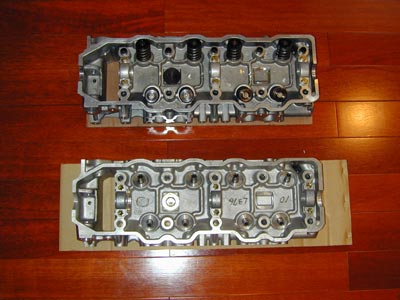
Cylinder Head Comparison
Difference between OEM and engnbldr.com cylinder head.
Engnbldr.com has an replacement cylinder head for around $400. Here is a close inspection of the OEM cylinder head and the aftermarket cylinder head for comparion. Engnbldr is well know on the web and in various newsgroups for quality parts and good price. Per engnbldr's website, he does not use cheap Chinese made casting that are avialable now. This is the same cylinder head that he starts with for his performance upgrade. It has numerous areas that are reinforced.

Top one is OEM, the bottom one is engnbldr's. Every detail looks pretty much identical.
All pictures on the left below are from engnbldr's cylinder head, and right ones are Toyota OEM.
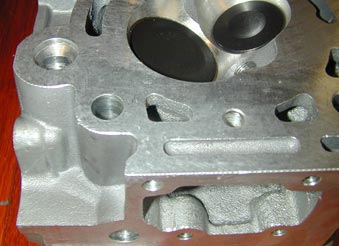
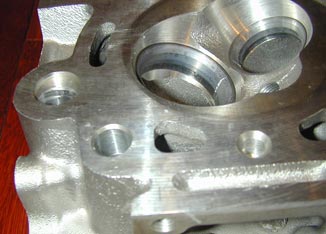
Lower left hole is the hole for the cylinder head bolt to pass through. The OEM one has a chamfer on the edge of the hole, the engnbldr one does not. Since the cylinder head gasket slides between the block and the head, guess a little chamfer is good to prevent possible gouging. It would be easy to round off the corner of the hole. Evidently, one of the front hole on the OEM head did not have the chamfer, and was just as sharp as the engnbldr's head. Surface finish on both heads seems to be about the same. Surface finish is important on the head so gasket can grip the head and not slide. Yet, when it does slide a just right finish will prevent premature wear to the gasket and head since the gasket is under high pressure when it is sliding.
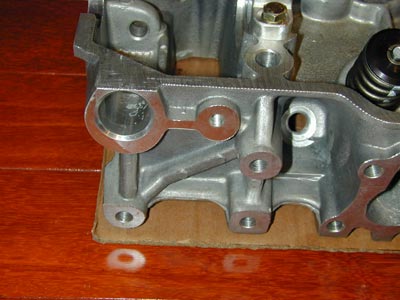
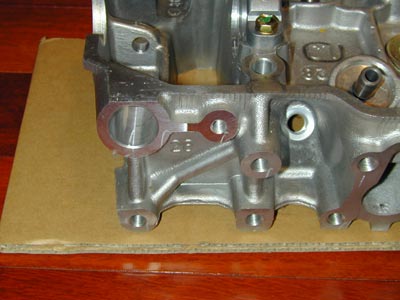
The engnbldr hole for the distributor mount seems to be out of alignment and too high on the cylinder head. Upon closer measurement, then are actually in the same position and angle. It is an optical illusion because the boss for the distrubutor is actually bigger in the lower direction than is necessary. The larger chamfer on the distrubutor opening is larger in the engnbldr head, so it looks like is closer to the top of the head. In reality, is in the same position. No issue here. You can also see that the top edges of the cylinder head is not deburred as on the OEM head. Functionally, they are the same.
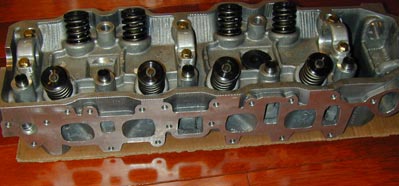
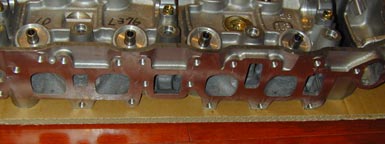
The intake ports looks to be the same size and shape. All major and minor bolt holes accounted for, which is a always a good thing in an aftermarket part. Some things as complicated as a cylinder head may not be so easy to get an aftermarket part that fits the first time.
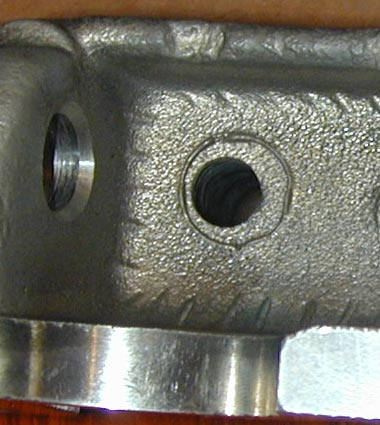
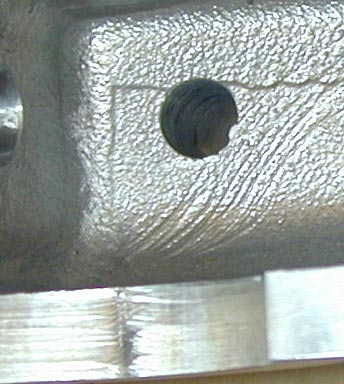
There is a raised ridge around the infamous bolt's hole under the cam gear in the front of the cylinder head. The OEM head is still a little rough in the same area, but does not have the ridge. I would knock down the ridge with a dremel or something before using the head. Probably would not matter much though since the bolt is not a critical tension member in the head.
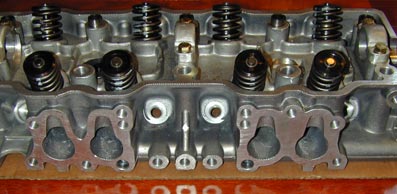
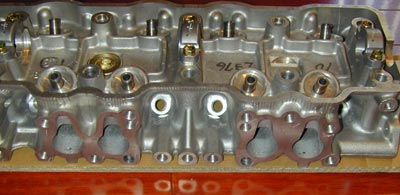
The exhause port looks to be the same shape and size. All fastener holes are accounted for.
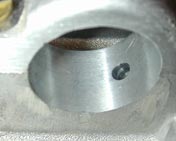
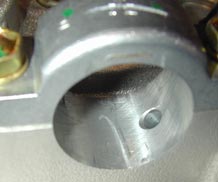
Here is the oiling hole for the cam bearing. Both holes are the same size. However, the OEM hole has a chamfer around the hole. The engnbldr head does not. The chamfer is probably better for oiling. It would not be a bad idea to round off the edge of the hole with a deburring tool before installing the camshaft. It would help to spread the oil onto the bearing. Just don't over do it. The bottom of the bearing is where all the loads are, and oil pressure there is very high. You don't want the oil hole to extend to the bottom of the bearing. Otherwise, high pressure oil film would reverse oil flow back into the oil pump, and you have metal to metal contact. At least that is how it is theoretically.
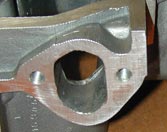
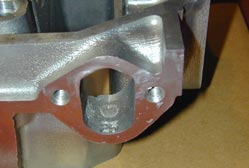
Towards the end of the opening, the OEM head is better finished. No big deal here.
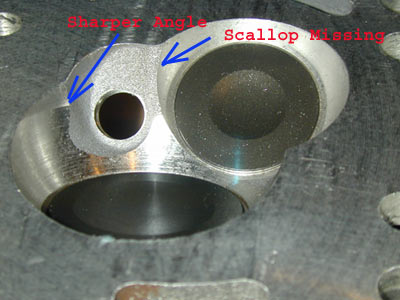
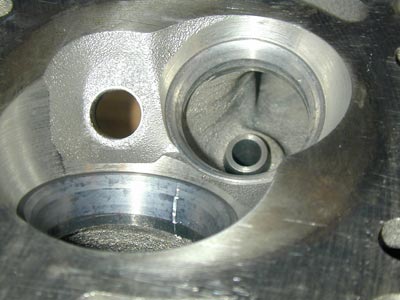
Combustion chamber is the area that concerns me the most. The first impression right after looking at it was that somehow the combustion chamber looks different than when I did the original head year and a half ago. The chamber seems to be deeper and narrower. After buying the OEM head for $470, direct comparison of the two reveals that while though general configuration are about the same, various contours are different. I would have no idea how it would affect performance if it improves power or mpg. It takes complicated computer analysis to see how combustion behaves. Cylinder head shaping is part art and part science. I would tend to think Toyota spent some time shaping their heads to get the optimized contour. The engnbldr head's sharp angle would probably restrict the flow of air into the chamber. Although that is just my guess.
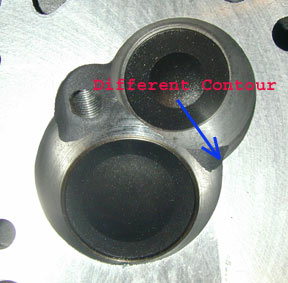
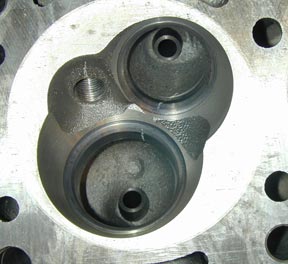
Shape of the chamber opposite side of the sparkplug is also different. There is a sharper angle on the contour that tend more to isolate the two valves more. The OEM one has a deeper scallop to allow gas to move across the combustion chamber. However, I don't claim to have any knowledge of combustion chamber design. Guess is that the OEM one is better performance since it seems to allow better flow into the cylinder. There are other factor in performance of the chamber like how well the gas mix inside the chamber. The more turbulance the better for mixing of fuel with air. Sharper angles may achieve better turbulance. The finish on the OEM combustion chamber is surprisingly rough. The engnbldr head is better finished in this area.
Conclusion: With the side by side comparison, I was impress with the overall quality of the engnbldr cylinder head expcept for the deviation in combustion chamber shape which I consider to be a very important parameter. The engnbldr head does not have chamfer on various holes as the OEM. Would not hurt to spend a little time deburring all sharp edges especially the important ones. The new cylinder head is also supposed to be reinforced in various critical areas, but it was not obvious to me where they are.
Since I am spending the money on a new bottom end, for about $150 or so, I could get the OEM head. My decision was to use the OEM head, and sell the engnbldr head to recover some of the cost. Given that the rebuild will cost $3k, I will take a $100 hit for selling the head and get a better one. These pictures are here so you can decide for yourself which one you want without having to return one.
If the old head is warped or questionable, it would probably be better to use a new head rather than repairing the old one. Given that the engnbldr head has a different combustion chamber shape, I would try to stick with the old OEM head as much as possible. You may or may not get better performance with the different shape. Given the amount of research Toyota has on combustion science, there are more chances than not that the engnbldr head it is not as good as the Toyota head in the area of combustion chamber shape.